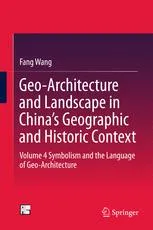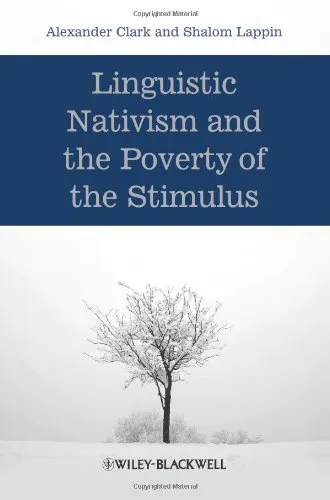Geo-Architecture and Landscape in China’s Geographic and Historic Context: Volume 4 Symbolism and the Language of Geo-Architecture
4.0
بر اساس نظر کاربران

شما میتونید سوالاتتون در باره کتاب رو از هوش مصنوعیش بعد از ورود بپرسید
هر دانلود یا پرسش از هوش مصنوعی 2 امتیاز لازم دارد، برای بدست آوردن امتیاز رایگان، به صفحه ی راهنمای امتیازات سر بزنید و یک سری کار ارزشمند انجام بدینکتاب های مرتبط:
معرفی کتاب
کتاب Geo-Architecture and Landscape in China’s Geographic and Historic Context: Volume 4 Symbolism and the Language of Geo-Architecture نوشتهٔ فانگ وانگ (Fang Wang) اثری متفکرانه و پژوهشی است که به بررسی عمیق مفاهیم نمادگرایی و زبان معماری-جغرافیایی در تمدن چین میپردازد. این کتاب بخش چهارم از مجموعهای جامع است که به شکوه تاریخی و جغرافیایی معماری چین از منظر فرهنگی، فلسفی و اجتماعی نگاه میکند.
خلاصهٔ کتاب
این کتاب در تلاش است تا ارتباط میان معماری و مناظر طبیعی چین را تحلیل کند؛ رابطهای که در طول قرون متمادی پایههای هویت فرهنگی این سرزمین را شکل داده است. نمادگرایی (Symbolism) نقش کلیدی در طراحی و کاربرد ساختارهای فیزیکی داشته و همچنین بازگوی اعتقادها و ایدئولوژیهای فلسفی جامعه چینی است. از جمله موضوعات برجسته، میتوان به تحلیل معابد، قصرها، باغهای مشهور و نحوه تلفیق آنها با طبیعت اشاره کرد.
نویسنده نشان میدهد که چگونه زبان معماری-جغرافیایی بهعنوان ابزاری برای بیان افکار متافیزیکی و چشماندازهای فلسفی عمل کرده است. این زبان خاص، با کمک ساختارها و چشماندازهایی که با عناصر طبیعی چون کوهها، دریاچهها و جنگلها ترکیب شدهاند، یک انسجام معنوی و فرهنگی را در کل منطقه به وجود آورده است.
نکات کلیدی کتاب
- درک نحوهٔ تاثیرگذاری عناصر طبیعی بر معماری سنتی چین.
- شناخت معنای نمادین پشت اجزای مختلف ساختمانها و باغهای تاریخی.
- تحلیل فلسفه کنفوسیوسی و تائوییستی و نقش آنها در شکلگیری معماری چینی.
- ارتباط میان معماری، طبیعت و معنویت در فرهنگ چین.
- رویکردهای نوین برای مطالعه "Geo-Architecture" و قابلیت اعمال آن بر دیگر فرهنگها.
نقلقولهای معروف از کتاب
“Architecture is not merely a physical construct, but a narrative of human thought and the interaction between humans and nature.”
“Symbolism in Chinese architecture is a language that bridges the temporal and the eternal, the physical and the metaphysical.”
چرا این کتاب اهمیت دارد؟
این کتاب به دلیل نگاه بینرشتهای که دارد، یک منبع ارزشمند برای پژوهشگران حوزههای معماری، جغرافیا، فرهنگشناسی و تاریخ محسوب میشود. بهویژه برای کسانی که علاقهمند به درک عمیقتر از نحوهٔ ارتباط بین انسان، طبیعت و ساختارهای معماری در فرهنگ شرق آسیا هستند.
علاوه بر این، کتاب Geo-Architecture and Landscape in China’s Geographic and Historic Context یک رویکرد نوین برای مطالعه گذشته به مقدار قابل توجهی از دیدگاه نمادین ارائه میدهد. این اثر برای کسانی که به دنبال الهامگیری از معماری پایدار و ارزشمند هستند، بسیار جذاب خواهد بود.
Introduction to "Geo-Architecture and Landscape in China’s Geographic and Historic Context: Volume 4 - Symbolism and the Language of Geo-Architecture"
"Geo-Architecture and Landscape in China’s Geographic and Historic Context: Volume 4 - Symbolism and the Language of Geo-Architecture" is a meticulously researched and intellectually enriching work that delves into the intricate relationship between geographic environments, historic narratives, and architectural symbolism in China. As part of a broader series exploring geo-architecture and landscapes, this volume focuses on the deeper meanings, cultural insights, and symbolic communication embedded within China's architectural heritage and landscape formations. The book is a convergence of geography, history, culture, and architecture, presenting readers with a powerful narrative that unveils the essence of Chinese aesthetic and philosophical traditions in shaping spaces.
Detailed Summary of the Book
In this fourth volume, the exploration of China's geo-architecture extends beyond its physical and stylistic traits into its symbolic meanings and language. Architectural and geographical elements in China are deeply rooted in cultural narratives, spiritual ideologies, and historical progression. This volume deciphers the underlying messages conveyed through architectural designs and their interaction with natural and built landscapes.
The book dives into topics such as the symbolism of mountains and rivers in traditional Chinese cosmology, the importance of geomancy (Feng Shui) in urban and rural planning, and the role of historic myths and tales in defining geographic architecture. Throughout its chapters, readers are invited to understand how seemingly simple structures – from temples and palaces to bridges and gardens – encapsulate complex ideas of harmony, power, and spiritual alignment.
With its multi-disciplinary approach, the author also explores how traditional architecture communicates with broader philosophical systems such as Confucianism, Taoism, and Buddhism, demonstrating how cultural symbolism influences both form and function. As China's geography intertwines with cultural motifs, this book offers both theoretical analysis and vivid real-world examples to build a grounded yet visionary framework for readers seeking to understand the profound interplay of history, culture, and place in architecture.
Key Takeaways
- The book unravels the symbolic language encoded in China's geo-architectural forms and landscapes.
- It bridges the gap between geography, history, and metaphysical concepts such as harmony and duality, which are central to Chinese traditions.
- Readers will gain insights into how architecture communicates cultural and spiritual values, transcending mere functionality.
- A deeper understanding of the cultural significance of natural and built environments in shaping collective identity and national heritage.
- The analysis frames China’s architecture not merely as a spatial phenomenon but as a language that conveys tradition, philosophy, and cosmic principles.
Famous Quotes from the Book
"To walk through China’s architectural heritage is to traverse the timeline of a civilization shaped by the harmony of culture, geography, and the heavens."
"Mountains and rivers are more than just natural formations; they are sacred characters in the grand narrative of China's geo-architecture, each carrying its distinct symbolic resonance."
"Architecture in China speaks not just in lines and materials but through symbols that bridge the earthly and the divine."
Why This Book Matters
This book is an essential resource for architects, historians, geographers, and cultural enthusiasts who seek to understand the layered interplay between natural environment, human civilization, and cultural expression. By focusing on symbolism and the unique 'language' of Chinese architecture and landscapes, the book invites readers to see beyond the surface and appreciate the philosophies deeply rooted in China's built environment.
As globalization prompts further dialogue between different architectural traditions, "Geo-Architecture and Landscape in China’s Geographic and Historic Context: Volume 4" serves as a critical node connecting cultural and intellectual frameworks across disciplines. It highlights the relevance of historical knowledge in guiding sustainable architecture and urban design while fostering a renewed appreciation for humanity's relationships with nature.
Lastly, the book underscores the necessity of preserving unique architectural traditions in the face of modernity, asserting that heritage serves not merely as a relic of the past but also as a compass for future development.
دانلود رایگان مستقیم
You Can Download this book after Login
دسترسی به کتابها از طریق پلتفرمهای قانونی و کتابخانههای عمومی نه تنها از حقوق نویسندگان و ناشران حمایت میکند، بلکه به پایداری فرهنگ کتابخوانی نیز کمک میرساند. پیش از دانلود، لحظهای به بررسی این گزینهها فکر کنید.
این کتاب رو در پلتفرم های دیگه ببینید
WorldCat به شما کمک میکنه تا کتاب ها رو در کتابخانه های سراسر دنیا پیدا کنید
امتیازها، نظرات تخصصی و صحبت ها درباره کتاب را در Goodreads ببینید
کتابهای کمیاب یا دست دوم را در AbeBooks پیدا کنید و بخرید



